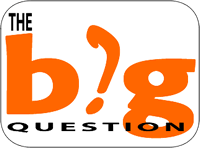Designing a “Learning Journey” #LX
One of the most useful tools that we instructional designers can borrow from #UX is...
Read More How do you assess whether your informal learning, social learning, continuous learning, performance support initiatives have the desired impact or achieve the desired results?
How do you assess whether your informal learning, social learning, continuous learning, performance support initiatives have the desired impact or achieve the desired results?
I have found myself agreeing very much with responses from both Jay Cross and Clive Shepherd, but as I read their posts, I found myself wanting to know how we help “convince” the powers that be (TPTB) that informal learning is a viable option. So, for me, the term assessment needed a finer point, I want to know why we are assessing.
Are we trying to…
I guess, the term “desired results” is the heart of this question for me.
Here’s 3 desired results and my very high level response of how to assess if your “initiative” has acheived it…
I would think that we should really be looking at many facets of assessment. This is a big, messy, potentially juicy area to explore. When you add in the learning vs. performance distinction, there are many ways to skin this proverbial cat. For example, I signed up for LAK11 – Learning Analytics (Google Group is here – may be able to access more information through it) , because I was interested in seeing what we might do with assessment and analytics moving forward. George Siemens wrote a post about it in 2010.
Note: As I went to link to Jay’s post, I see that he read Dan Pontefract’s post about his views of the “Kirkpatricks” (Dan’s post made me think they were some kind of learning mafia, like the Covey family, the Blanchards, the Robinsons, the Hortons etc) and Jay has written another post which expands thinking into measuring events vs. processes. His posts are better than mine, but isn’t it great that through the BQ I can “converse” with real thought leaders like Jay?